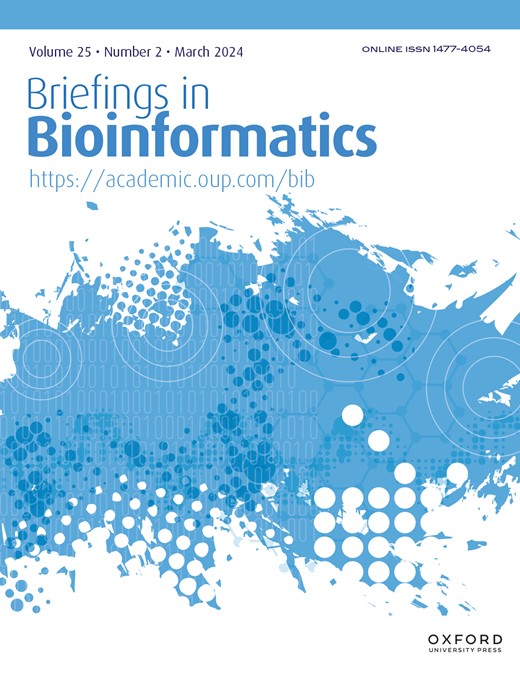Enhancing clinical genomic accuracy with panelGC: a novel metric and tool for quantifying and monitoring GC biases in hybridization capture panel sequencing.
IF 6.8
2区 生物学
Q1 BIOCHEMICAL RESEARCH METHODS
引用次数: 0
Abstract
Accurate assessment of fragment abundance within a genome is crucial in clinical genomics applications such as the analysis of copy number variation (CNV). However, this task is often hindered by biased coverage in regions with varying guanine-cytosine (GC) content. These biases are particularly exacerbated in hybridization capture sequencing due to GC effects on probe hybridization and polymerase chain reaction (PCR) amplification efficiency. Such GC content-associated variations can exert a negative impact on the fidelity of CNV calling within hybridization capture panels. In this report, we present panelGC, a novel metric, to quantify and monitor GC biases in hybridization capture sequencing data. We establish the efficacy of panelGC, demonstrating its proficiency in identifying and flagging potential procedural anomalies, even in situations where instrument and experimental monitoring data may not be readily accessible. Validation using real-world datasets demonstrates that panelGC enhances the quality control and reliability of hybridization capture panel sequencing.利用panelGC提高临床基因组的准确性:一种用于量化和监测杂交捕获面板测序中GC偏差的新型指标和工具。
在临床基因组学应用(如拷贝数变异(CNV)分析)中,准确评估基因组内的片段丰度至关重要。然而,在鸟嘌呤-胞嘧啶(GC)含量不同的区域,这项工作往往会受到覆盖范围偏差的阻碍。在杂交捕获测序中,由于 GC 对探针杂交和聚合酶链反应(PCR)扩增效率的影响,这些偏差尤其严重。这种与 GC 含量相关的变异会对杂交捕获面板中 CNV 调用的保真度产生负面影响。在本报告中,我们提出了一种新型指标--panelGC,用于量化和监测杂交捕获测序数据中的 GC 偏差。我们证实了panelGC的功效,证明它能熟练识别和标记潜在的程序异常,即使在仪器和实验监测数据不容易获得的情况下也是如此。使用实际数据集进行的验证表明,panelGC 提高了杂交捕获平板测序的质量控制和可靠性。
本文章由计算机程序翻译,如有差异,请以英文原文为准。
求助全文
约1分钟内获得全文
求助全文
来源期刊

Briefings in bioinformatics
生物-生化研究方法
CiteScore
13.20
自引率
13.70%
发文量
549
审稿时长
6 months
期刊介绍:
Briefings in Bioinformatics is an international journal serving as a platform for researchers and educators in the life sciences. It also appeals to mathematicians, statisticians, and computer scientists applying their expertise to biological challenges. The journal focuses on reviews tailored for users of databases and analytical tools in contemporary genetics, molecular and systems biology. It stands out by offering practical assistance and guidance to non-specialists in computerized methodologies. Covering a wide range from introductory concepts to specific protocols and analyses, the papers address bacterial, plant, fungal, animal, and human data.
The journal's detailed subject areas include genetic studies of phenotypes and genotypes, mapping, DNA sequencing, expression profiling, gene expression studies, microarrays, alignment methods, protein profiles and HMMs, lipids, metabolic and signaling pathways, structure determination and function prediction, phylogenetic studies, and education and training.
 求助内容:
求助内容: 应助结果提醒方式:
应助结果提醒方式:


